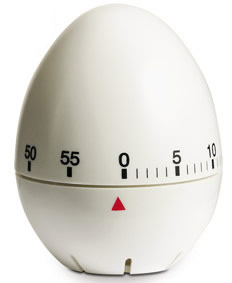 Is it just me, or has the cachet of the home-cooked meal really skyrocketed lately? For most of us, shopping seasonally, taking a plant-centric approach to ingredients, and cooking from scratch have long been the only real ways to make a dent in the environmental impact our food has without going into debt.
Is it just me, or has the cachet of the home-cooked meal really skyrocketed lately? For most of us, shopping seasonally, taking a plant-centric approach to ingredients, and cooking from scratch have long been the only real ways to make a dent in the environmental impact our food has without going into debt.
Lately, though, sustainable food advocates have begun really homing in on the cooking part of that equation. (It’s about time — we may all be alone in our separate kitchens, but at least we’re talking to one another.) And it looks we can all agree on a few things: Cooking at home saves money (even when compared to the least expensive fast food chains). And it takes time — so much time that some are arguing we should begin calculating an average hourly wage into the cost.
I have a third option to suggest. Rather than 1) eat out or 2) think of cooking as a time-intensive commitment every time, why not 3) get to know your kitchen timer.
This basic gadget is nothing special — in fact, it’s kind of annoying. But that’s the point: To excel at multitasking in the kitchen, you need to get used to being interrupted. Here are a few basic suggestions to smooth the transition:
1) Cook when you’re not hungry. If you’re at home and awake for longer than two hours at a time, something might as well be cooking (although even the awake part is negotiable). In other words, while I’m cleaning, writing, talking on the phone, walking the dog, etc., I make sure that there’s a grain on the stove, vegetables roasting, stock boiling, or heirloom beans soaking.
 I’m inspired by this vintage 1960’s cookbook by husband and wife team Paul and Leslie Rubenstein, which promises, “200 distinctive recipes for night before preparation and night of the feast relaxation.”
I’m inspired by this vintage 1960’s cookbook by husband and wife team Paul and Leslie Rubenstein, which promises, “200 distinctive recipes for night before preparation and night of the feast relaxation.”
2) Use a timer (duh). If you don’t have one built in to your stove, invest in one. The more loud and annoying the sound it makes, the better. That way you’ll be able to trust that you’ll hear it (and want to turn it off).
3) Start with Sundays. If you’re new to cooking, commit a portion of your Sunday to being at home and cooking one or two things that require more “passive” cook time than active cook time — like soup, chili, or even just a pot of brown rice you can reheat with other things during the week.
4) Start cooking something after a meal if you need to. It sounds counterintuitive, but just because you come home to a lack of healthy meal options and resort to a box of mac ‘n cheese doesn’t mean you can’t put some time-intensive ingredient on the stove that you’ll want ready for tomorrow’s lunch or dinner. Think about it like a fall wardrobe: It’s all about layering. Let the beets roast tonight (while you fold laundry or watch a movie) so you can chop them into a salad tomorrow.
5) Don’t forget marinating, quick pickling, brining, and the other cold ways to cook ahead. Sometimes the “passive” time doesn’t even require a timer — but just takes an extra five minutes of combining ingredients and putting them back in the fridge.
6) Make time for meals that you cook, from scratch, the night you eat them — even if it’s only once a week. All of the above assumes that you are too busy to really enjoy the ritual involved in planning and executing a meal for the sake of it. When I have time to really luxuriate in meal preparation, I’ll often choose something time-consuming and tedious, like tamales, pot stickers, or risotto. Of course, I make way too much and save the leftovers, but you get the point: if cooking becomes less of a chore during the week, you’ll have energy left for fun projects when the occasion allows.
None of this is rocket science. To reiterate: Make a kitchen timer your friend, cook a bunch of stuff, and think about other things.



